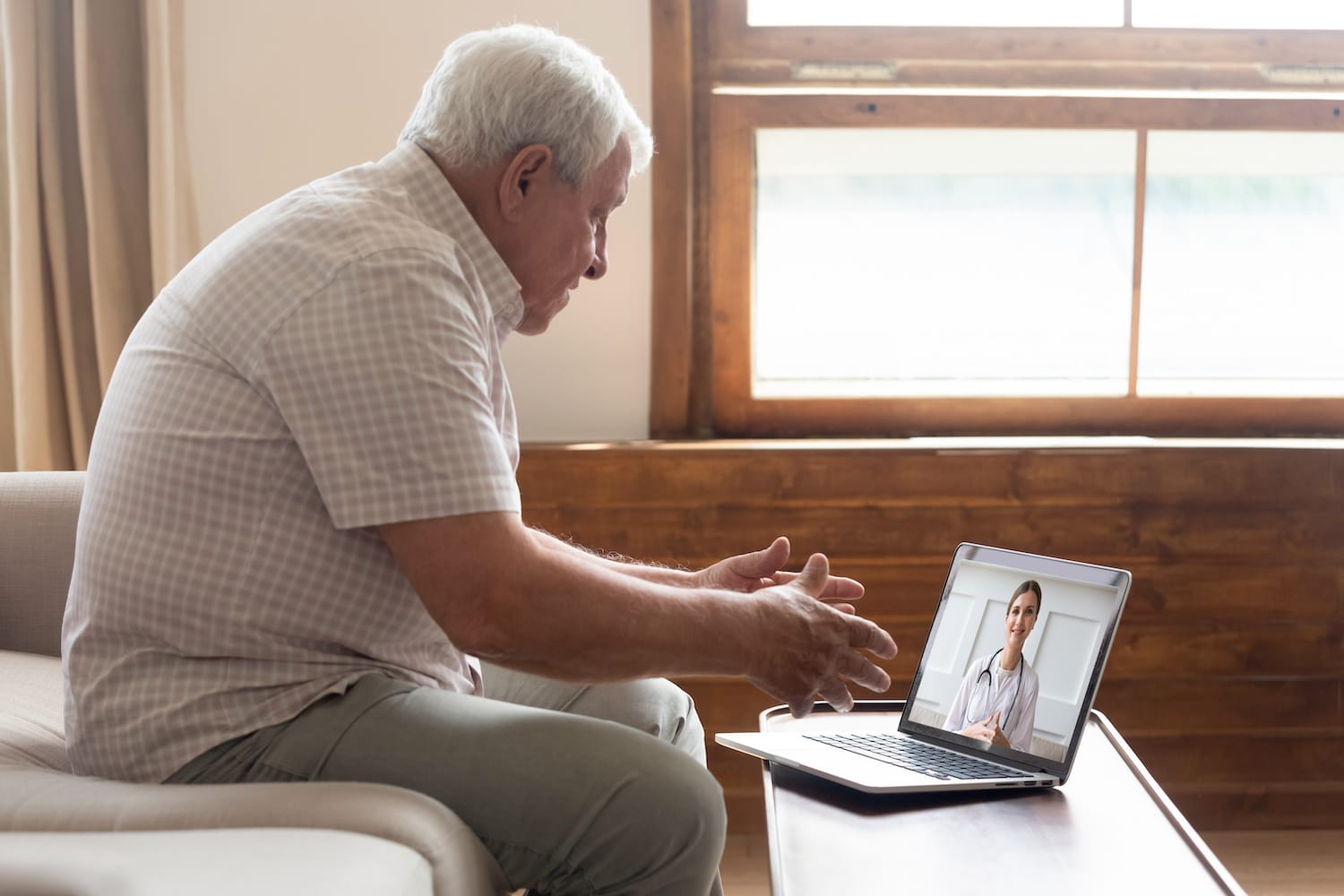Despite often being thought of as the same thing, telehealth and telemedicine actually mean incredibly different things. Often used interchangeably, they should not be confused with one another.
The confusion is to be expected, especially with both terms being thrown around more than ever now. The COVID-19 pandemic greatly affected the world of telehealth and telemedicine with more places making the shift to provide such services amidst lockdowns and overloaded hospitals.
The CDC stated that very early on in the pandemic, in-person healthcare visits declined by nearly 60% across the United States. But telehealth visits rightfully increased, accounting for nearly 30% of all care provided.
This wasn’t always easy, however. Prior to the pandemic, physicians were often required to have special licensure to provide telehealth care to patients. However, currently, 18 states have waived such requirements. It’s not clear if this is temporary or not, but there is a lot of push to make virtual care a vehicle that sticks around long after the pandemic.
The ability to make such shifts has been an amazing way to ensure patients across the country get the care they need. These may include therapy, prescription reviews, or consultations.
So today, we’re going to clearly define these terms, explain why each is so important in healthcare, and discuss why we believe it’s here to stay.

What is telehealth and why does it matter?
The use of the internet has changed our lives in so many ways—both positive and negative. But the pairing of technology and healthcare has completely transformed how we can deliver information and care to patients.
Telehealth is a revolutionary way to access healthcare services remotely and manage your medical needs. With the use of digital information, computers, or mobile devices, one can gain quick and easy access to information and applications that help provide better support with treatments and healthcare management.
The benefits of telehealth include:
- Making self-management easier and more convenient
- Improving communication between patients and their care team
- Making healthcare services more accessible to patients living far away or who have limited mobility
- Providing easier access to healthcare specialists
While telemedicine is centered around patient care, telehealth focuses on using technology to better manage health, access data, and track care plans. Here are some great examples of how telehealth can be used in real life.
The added convenience of virtual doctor appointments.
Doctors can provide online consultations for their patients. This is especially helpful if you need a last-minute appointment or live far away from the doctor’s office.
These virtual visits allow doctors and patients to access information by video conferencing with one another either through an app on your phone or computer that allows for live video chat.
Things like Doctors on Demand can allow for quick virtual visits as opposed to making a trip to urgent care. People can virtually connect with a doctor for things like rashes, common viral infections, prescriptions refills, or other minor concerns.
This can allow the doctor to assess a patient’s needs quickly, send an antibiotic to the pharmacy, and save a ton of time for patients and providers alike.
Remote health monitoring for patients with chronic conditions.
Patients with chronic conditions can now use technology to monitor vital signs like blood pressure, blood sugar levels, heart rate, respiratory rates, and oxygen levels from the comfort of their own homes.
This is a great way to help individuals avoid unnecessary emergency room visits or procedures that could have been avoided if care had been managed appropriately.
Telehealth is an excellent way for patients and doctors to interact using technology to manage a medical condition or monitor a chronic disease at home, where the patient feels most comfortable. It also allows patients and physicians to have the most up-to-date and accurate data to adjust treatments accurately and quickly.
Patients modernize their care with portals and apps.
Patients can download apps or use online portals to access their own health records, schedule appointments, refill prescriptions, and communicate with their healthcare providers.
These are great tools that allow patients to manage their medical information on the go from any location, at any time. In some cases, this also means their data is centralized so it’s easier to access and send to other providers for second opinions or ongoing healthcare maintenance.
More convenient correspondence between physicians.
Patients can log in to a patient portal and message their physician’s office with questions or concerns. This allows for more timely communication between patients and providers.
In addition, doctors need to speak with other doctors often to discuss a patient’s case, health management, and other factors. Telehealth allows them to quickly and securely share and access sensitive patient information in a secure platform and respond in real-time.

How does telemedicine differ from telehealth?
Telemedicine is a subset of telehealth that refers solely to providing healthcare services across long distances. For example, people living in remote areas or those not able to easily leave their homes due to mobility issues.
It still involves using technology like video chat or wireless communication to provide healthcare services from a healthcare provider, but with more emphasis on remote areas that do not have access to in-person healthcare. Particularly, access to specialties and other complex health care.
The benefits of telehealth and telemedicine are great. Thanks to technology, it has never been easier to monitor your health or receive quality care, all from the comfort of your own home or mobile device.
Ōmcare plays a big part in both telehealth and telemedicine. Our at-home device allows quick access to providers and monitored and secure disbursement of medications without the need to drive to a pharmacy or manage individual prescriptions.
If this sounds like something you need, please don’t hesitate to reach out to us and get started on improving your or your loved one’s personal healthcare management.

